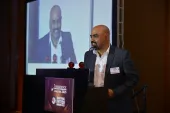
Pivoting to Digital: How the insurance sector is moving with tech
Making bolder moves on digital will be needed to attract a bigger part of the market.
The insurance landscape changed drastically since last year as the pandemic disrupted the traditional ways of how business was done. No longer were face-to-face meetings possible, nor were agents able to personally attend to each of their clients’ concerns. The change demanded that insurance companies shift to mobile apps and adapt to modern tools to make offerings more accessible to its clients.
Industry leaders attended the “Insurance Asia Digital Conference” held 6 May 2021 and shared to over 120 attendees how the market is rapidly changing its approach to insurance, especially with the onset of the COVID-19 pandemic.
Although the demand for insurance plans increased the past year, Bain & Company Associate Partner Rafael Lam said that they observed that individuals tend to have more trust in tech firms offering insurance coverage over traditional insurance companies.
He said that this can be attributed to how users have grown to trust these tech firms in providing them other services. This, then, becomes a matter of how to make sure that users can build their trust in traditional insurance companies who are only starting to build their own apps and technology-based platforms.
“They prefer large tech firms over traditional insurance largely because of price, reliability and brand. These have been because of the regular usage of users of these platforms,” Lam said, citing Grab and Gojek as examples of these trusted apps.
“When we surveyed them whether they would be interested in a single portal to manage healthcare, a remarkable 75% of them said that they would. That opportunity to provide a single portal is something that should not be ignored,” he added.
Lam said that most of the users of these apps are millennials who have little trust over traditional models in insurance. In order to reach this particular segment of the market, companies must ensure that the apps and offerings are user-friendly and will be attractive enough for users to explore and take interest in.
“A lot of these customers today, or at least a lot of users today, are the millennial group and a lot of insurers are trying to target these groups as well. For these moderately savvy and high insurance potential segments, the traditional model has not seemed to work very well yet in getting them to understand insurance and being able to get them to buy insurance from the current channels,” he said.
“Through a digital platform, the idea is to be able to engage them better and at the right time bring the insurance proposition to their attention and enclose the sale. A key thing to note here is also that we need to think of non-episodic type services in thinking of engagement. This means that it's not just a one-time use in a long time, and social platforms such as Facebook and Instagram creates this type of engagement,” he added.
Reassurance through digital apps
In a country like Vietnam, Manulife Vietnam CEO Sang Lee said that insurance was not taken positively pre-pandemic. The country’s health protection gap stood at around 36 billion in 2017, as life and non-life insurance penetration in Vietnam stands at only around 1.8%.
However, with the turn of the pandemic, he said that e-commerce played a big part in changing this mindset. Vietnam was their fastest growing market in Asia last year. Digital Innovation also allowed their advisors and employees to spend more time servicing rather than processing.
“They want reassurance and simplicity. Manulife Vietnam developed “eClaims”, the first end-to-end digital claim solutions in the market. From our perspective, end-to-end comprises that digital submission of the claim for internal review and processing and the transfer of payment to the customer,” he said.
“Our research shows that customers are receptive to this approach. Demand for internet-based services is soaring and more customers are looking for platforms that are secure, simple, convenient, and can deliver a quick solution,” he added.
Aviva Singlife’s Deputy Chairman Walter de Oude echoed this insight and said that they observed the same thing for their clients in Singapore. He said that a majority of their clients are preferring to have online tools available to them and are keen on reading up on certain information first on their own.
It shows how having integrated digital tools are growing to be more important rather than simply providing a simple program or service.
“Based on a research we conducted, 89% of people are willing to receive advice digitally. We also found that 68% of people would prefer to use an online channel to search for information around insurance. People do their own research and Google is the most important source of information for everybody,” he said.
“We take those insights and apply them to the capability framework of Aviva Singlife. We create an avenue to engage with people in a digital way and ultimately give them the opportunity to manage some of their services digitally and online,” he added.
Multifunctional teams
In line with moving to digital, insurance companies will need to have multifunctional teams rather than having separate teams work on one aspect of the job. Unlike before, Insurance EY Consulting Partner Dr. John Burton Morley said that businesses must make a shift internally too to have a more robust system set in place.
“What is finance in this new world? It is no longer a separate silo of things that do things that are traditionally known as finance which is really embedded within the organization. No longer will you have the silos between finance, actuarial, and risk, but they will all be part of these multifunctional teams,” Morley said.
“New skills will be added, such as data analysts, who can really look at the data in a different way and provide a different view on how to move things forward. All this will be enabled through technology in terms of new functionality, but also how it harnesses data through more accurate and speedy cloud-based technology,” he added.
To do this, Morley said that new systems will have to be set in place. With these new avenues and technology that improves how business can be done, the insurance sector will be able to keep up with its counterparts in the financial industry.
“There are certain things that you will do in the next to free up capability such as using RPA, or robotics process automation, but that really isn't an end-state goal,” he said.
“We move to systemising those processes in the core of the system, rather than providing a patch through things like RPA and outsourcing. It frees up capability and capacity to transition in order to make the further steps,” he added.



















 Advertise
Advertise








